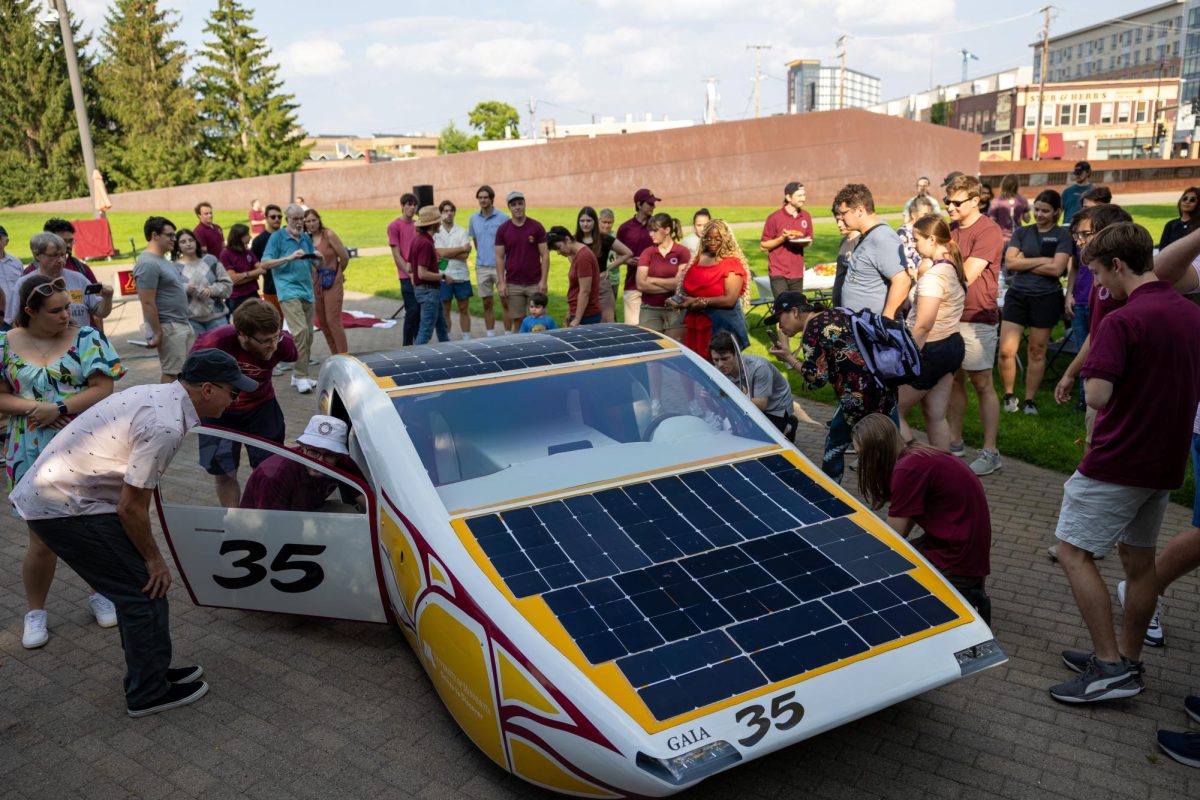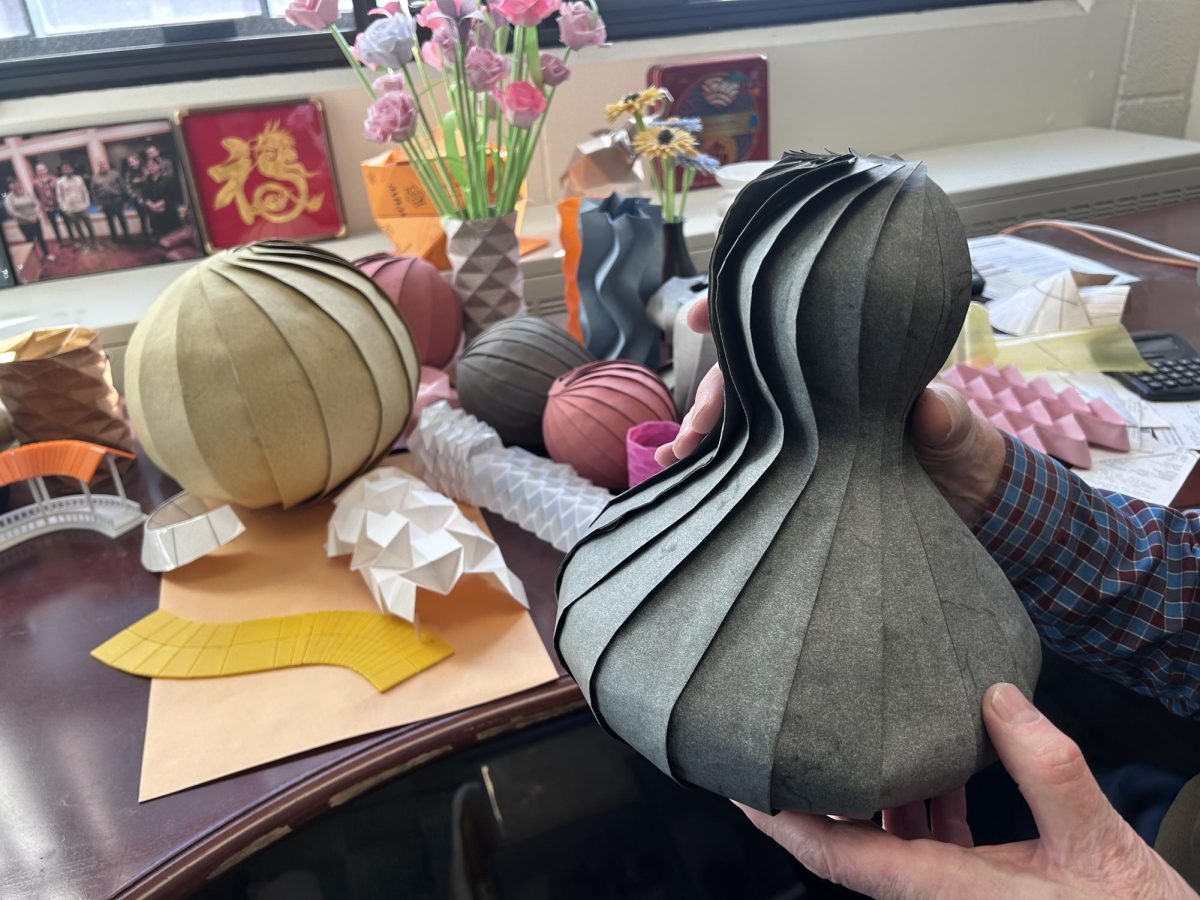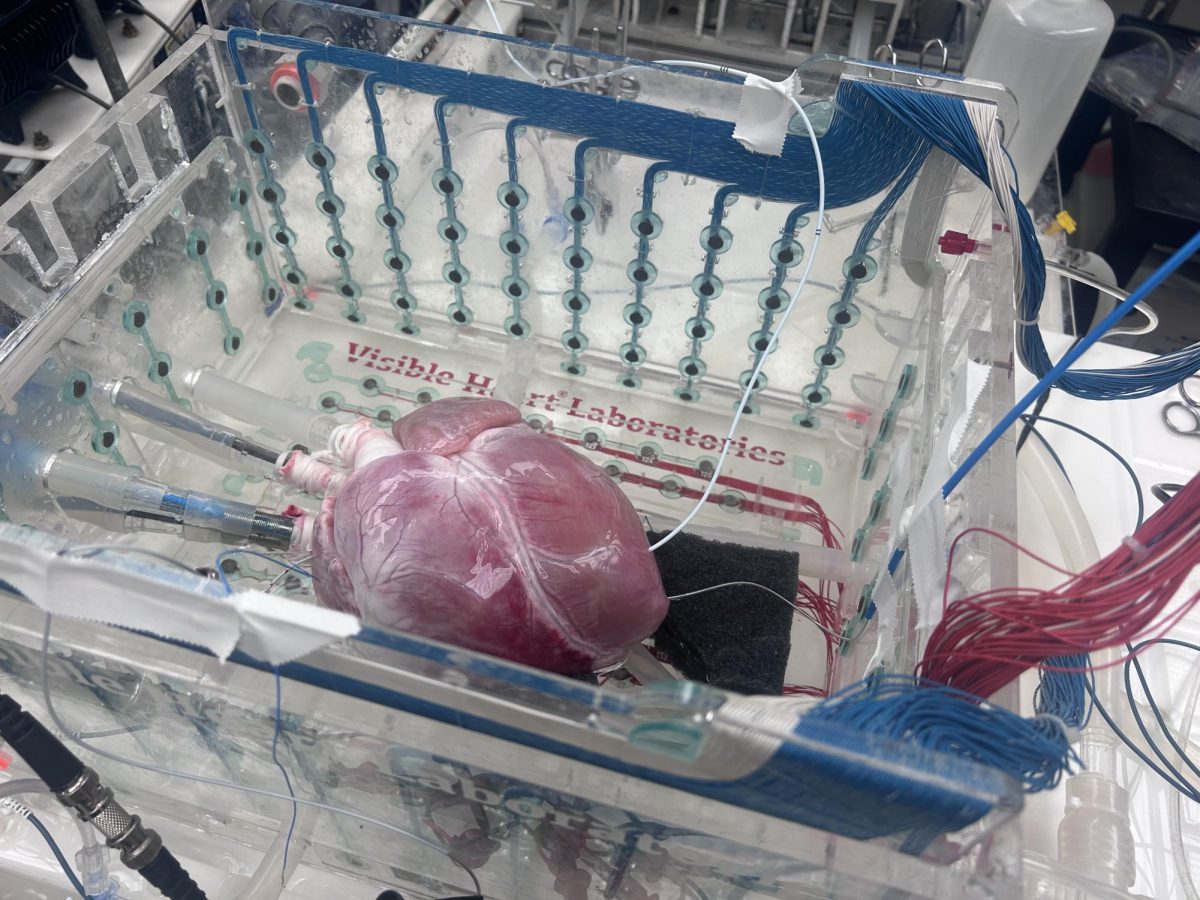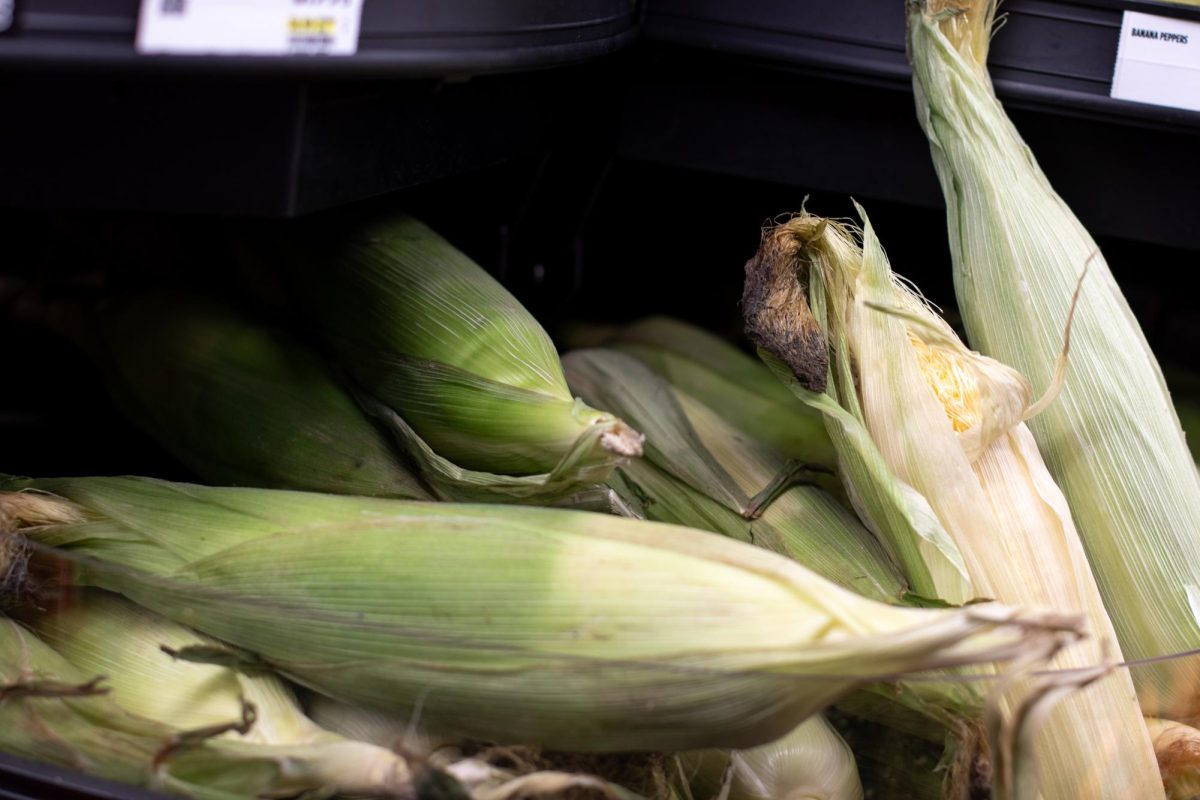The University of Minnesota Solar Vehicle Project (UMNSVP) unveiled its newest solar-powered car at a public event in front of the McNamara Alumni Center on Saturday.
The two-person vehicle, named Gaia, is the 15th solar-powered vehicle the team has created in 30 years. The first, Aurora I, was built in 1993, three years after the team was created in 1990.
The team builds all of the motors used in each model of their cars on-site. This is different from other solar vehicle teams across the country who order theirs externally, according to Amber Zierden, UMNSVP’s director of engineering.
This unique practice allows UMNSVP to customize their motor designs to make their car more efficient. Gaia employs this with its three-piece motor housing design, allowing for easier access and repairs while on and off the course.
“We have the front housing, the rear housing and the center housing, and what that does is it makes us more easily able to access the insides of the motor and make modifications and fixes if it shorts,” Zierden said.
Zierden, in a brief speech before the unveiling, said the team had gone through multiple design problems leading up to the reveal, including the motor controllers not allowing the team to drive the car or the sudden loss of access to the server containing all of the car’s structural and mechanical designs.
“Through all of this, I learned two things: the first is that the punches are always going to keep on coming, and the second is that our team is always going to learn how to roll with them,” Zierden said during her unveiling speech.
Gaia was the first car completed by the team in the post-COVID build cycle, according to Zane Johnson, director of operations with UMNSVP. Johnson said the 14th-generation car, Freyja, had an extended build cycle because of COVID.
“A lot of the team wasn’t around when Freyja was being designed, so we were just kinda throwing ideas at it and had a lot of driving force behind the creation. Because of that, I think we have the best-looking car that we’ve ever had,” Johnson said.
According to Johnson, the attendance at Gaia’s unveiling was around one-and-a-half times more than Freyja’s. Around 90 people attended Freyja’s reveal, and an estimated 150 to 170 came for Gaia’s.
Joel Roberts, the captain of Gaia’s race crew, emphasized how important it was for the car to function as efficiently as possible, which is what inspired many facets of Gaia’s design, including the three-piece motor housing design.
Roberts said the new regulations race officials implemented after the release of a documentary about the 2019 World Solar Challenge, where one of the vehicles had combusted, influenced part of Gaia’s design.
“The officials really tightened up on safety regs. Kind of to the point where you have to have everything triple-checked and every time you repair something on the car, it has to be re-approved by the officials before you can drive it,” Roberts said.
Gaia’s first race will be at the 2023 World Solar Challenge in October. It will also mark the team’s first international competition since the COVID-19 pandemic. According to Johnson, UMNSVP is one of only two North American teams competing in the week-long event.
UMNSVP is an open organization for students to join. Students can join the team by attending recruitment events during Fall 2023 or by visiting the team’s website.














